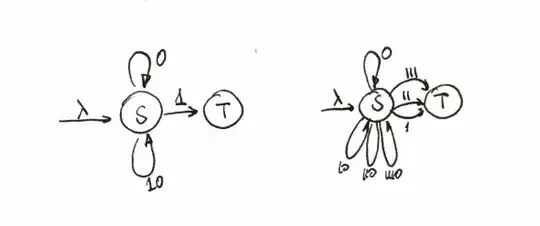Here is an attempt, inspired by drhab's comment.
Let $T(x,k)$ be the outcome "there are only red balls at the indices $[x;x+k-1]$ of the sequence". Let $P(T(x,k))$ be the probability of $T(x,k)$ occurring.
Through offset invariance, $P(T(x,k))$ is the same for all offsets $x$. Moreover, $P(T(0,k))$, which is the probability of drawing $k$ red balls in a row at the beginning of the sequence without replacement, has a closed form:
\begin{equation}
P(T(x,k)) \overset{\forall x \in [0;N-k]}{=} P(T(0,k)) = \frac{r}{N} \frac{r-1}{N-1} \dots \frac{r-k+1}{N-k+1} = \frac{\binom{r}{k}}{\binom{N}{k}}
\end{equation}
What you are looking for is the probability $P(T(any,k))$ that a sequence of $k$ consecutive red balls occurs at any offset, but you don't want to double-count overlaps:
\begin{equation}
P(T(any,k)) = P\left(\bigcup_{0\leq x \leq N-k}{T(x,k)}\right)
\end{equation}
This expression can be expanded using the identity for the probability of a union of non-exclusive events:
\begin{equation}
P(T(any,k)) = \sum_{1\leq n \leq N-k+1} (-1)^{n+1} \sum_{0\leq x_1 < x_2< \dots < x_n \leq N-k}P\left( \bigcap_{ x\in\{x_1,x_2, \dots, x_n\} }{T(x,k)} \right)
\end{equation}
Now, we can use offset invariance again to simplify the inner term of the sum:
\begin{equation}
\DeclareMathOperator{\card}{card}
P\left( \bigcap_{ x\in\{x_1,x_2, \dots, x_n\} }{T(x,k)} \right) = P\left(T\left(0,\card\left( \bigcup_{ x\in\{x_1,x_2, \dots, x_n\} }{[x;x+k-1]} \right)\right)\right)
\end{equation}
where $\card\left(\bigcup{[x;x+k-1]} \right)$ is the number of unique sequence indices included in the union of intervals $\bigcup{[x;x+k-1]}$.
Basic bounds: $k+n-1 \leq \card\left( \bigcup_{ x\in\{x_1,x_2, \dots, x_n\} }{[x;x+k-1]} \right) \leq n k$. The lower bound is reached when all intervals are maximally overlapping (each one is shifted by 1 after the previous). The upper bound is reached when no intervals are overlapping.
This approach therefore requires finding:
\begin{equation}
\card\left( \bigcup_{ x\in\{x_1,x_2, \dots, x_n\} }{[x;x+k-1]} \right) \quad \text{for} \quad 0\leq x_1 < x_2< \dots < x_n \leq N-k
\end{equation}
which can be efficiently computed explicitly by an algorithm.
Optimizations
The heaviest operation is clearly the inner sum $\sum_{0\leq x_1 < x_2< \dots < x_n \leq N-k}$. However, many of its terms are equal (e.g. in the non-overlapping case, the term is always $P(T(0,nk))$) and could be counted explicitly. Many terms can also be null because the cardinality of the union of intervals exceeds $r$. All these properties allow simplifying the sum.
The outer sum $\sum_{1\leq n \leq N-k+1} (-1)^{n+1}\dots$ can be truncated without loss to $1\leq n\leq r-k+1$, because all the other terms are null (cardinality exceeds $r$).
Finally, we can rewrite:
\begin{equation}
P(T(any,k)) = \sum_{1\leq n \leq r-k+1} (-1)^{n+1} \sum_{k+n-1\leq j \leq \min(nk,r)}D(n,j)P(T(0,j))
\end{equation}
where $D(n,j)$ counts the number of terms of cardinality $j$ at outer iteration $n$.
And if you can find an efficient way of computing $D(n,j)$, you have solved the problem in an efficient way.
As a side note, each iteration of the outer sum $\sum (-1)^{n+1}\dots$ approaches the exact result by exponentially decreasing up/down steps, which implies that this sum may be truncated after the desired precision is reached.
